Using ggplot2, I want to fill the bars of a barplot that shows the relative frequencies of one categorial variable (i) in two differently sized groups (g = "A", "B") with a third categorial variable (f). The bars within each group should sum up to 100%.
Here's a reproducible example and what I've tried so far:
set.seed(7)
g <- sample(c("A", "B"), 100, replace=TRUE, prob=c(0.7, 0.3))
i <- sample(c("C1", "C2"), 100, replace=TRUE)
f <- sample(c("X", "Y", "Z"), 100, replace=TRUE, prob=c(0.2, 0.3, 0.5))
df <- data.frame(g, i, f)
p1 <- ggplot(df, aes(x=i, y=stat(prop)))+
geom_bar(aes(group = g, fill = f))+
facet_grid(~g)
p1
However, the "fill" command has no effect on this plot (all grey bars).
Hence I tried some code found here, that creates groups using 2 variables. The resulting barplot comes close to what I want, is filled by the third variable, but now the percentages do not add up to 100%, resp. 1:
p2 <- ggplot(example_df, aes(x=i, y=stat(prop)))+
geom_bar(aes(group = interaction(g, f), fill = f))+
facet_grid(~g)
p2
Altough this problem sounds very similar, applying the code to a stacked and grouped barplot only reproduces my problems stated above.
Any help appreciated - a pure ggplot2 solution would be awesome, though.

